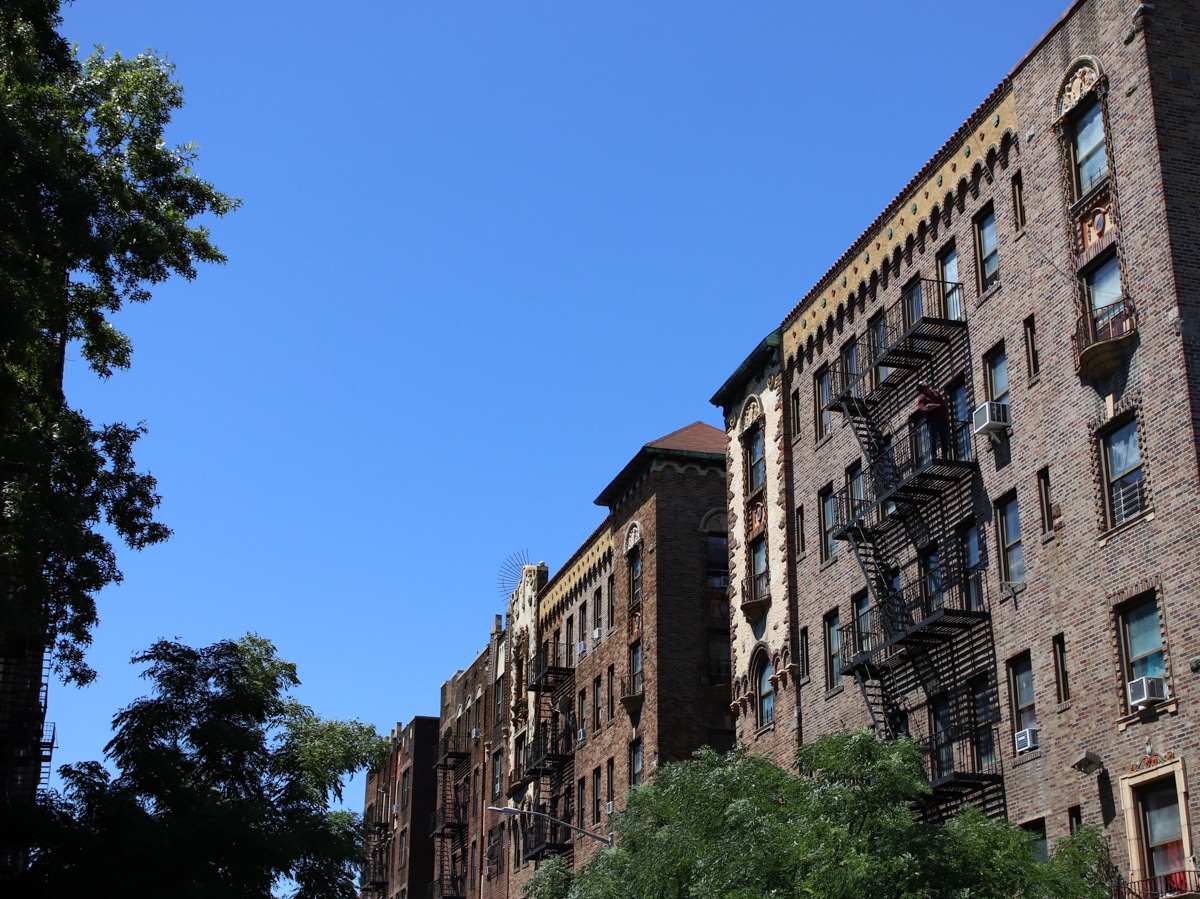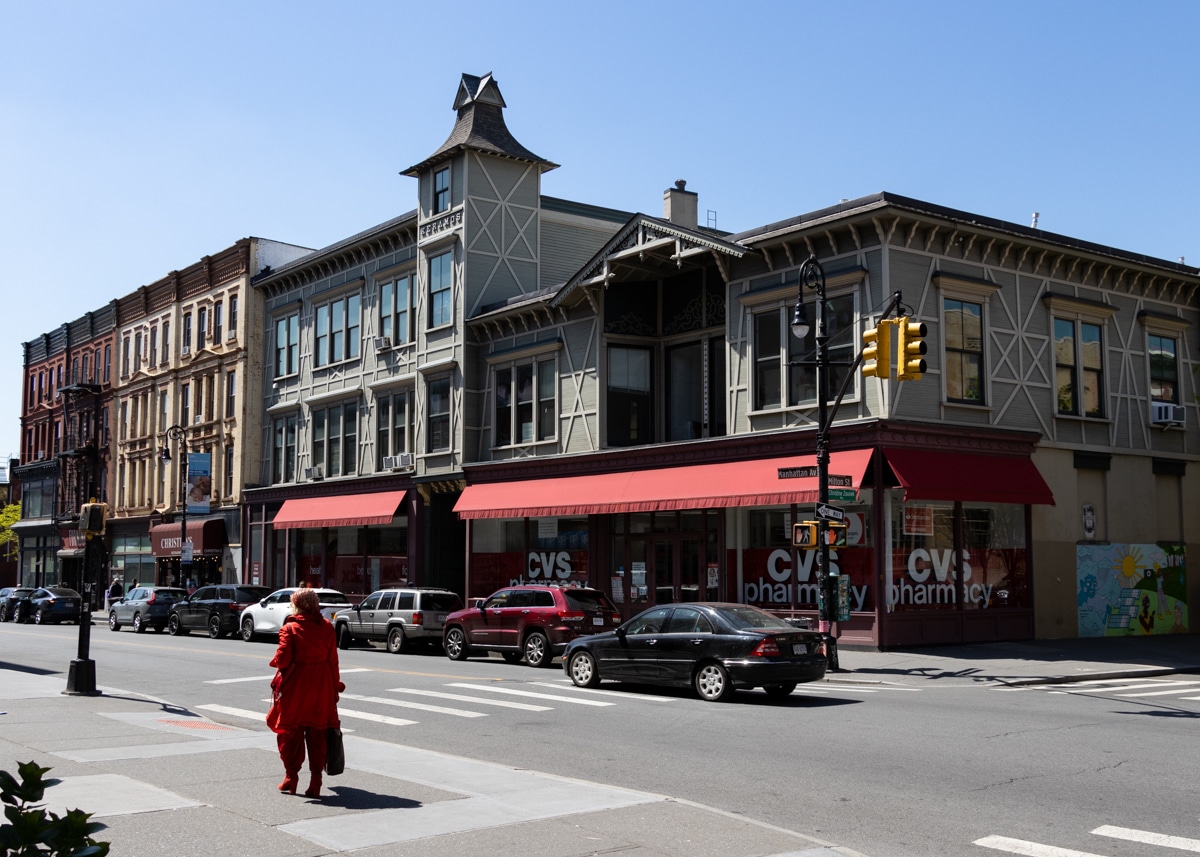Walkabout: The House on Hancock Street, Part 2
Read Part 1 of this story. On July 1, 1898, former Senator James W. Birkett died at his home at 185 Hancock Street, in the Bedford section of Brooklyn. He had been a State Senator in Albany for two years, beginning in 1889, a dutiful Republican soldier in the Grand Old Party. Birkett had started…

Read Part 1 of this story.
On July 1, 1898, former Senator James W. Birkett died at his home at 185 Hancock Street, in the Bedford section of Brooklyn. He had been a State Senator in Albany for two years, beginning in 1889, a dutiful Republican soldier in the Grand Old Party.
Birkett had started out in the plumbing business, and made a tidy fortune selling pipes and plumbing fixtures at a time when Victorian plumbing was at its height, and Brooklyn developers were throwing up new housing as fast as was humanly possible, all with new bathroom and kitchen features and fixtures.
He had been married twice; his first wife, the mother of his three children, had died early in her life, and he had remarried, this time to the former Amelia Early, a beautiful woman who would become the evil stepmother in our story.
The Senator may have been a popular local mover and shaker, and a canny businessman, but he was a lousy investor. His considerable fortune was made and lost in a matter of years, due to bad investments and profligate spending. Although he was able to recoup some of it, and died in comfortable financial circumstances, he wasn’t the rich man he had been, and that must have been of great disappointment to the widow. In addition to the fine house on Hancock Street, he owned a plumbing warehouse and factory on Jay Street, in Downtown Brooklyn.
When James Birkett died in 1898, his entire estate went to his wife, with the intention that she would share it with her stepchildren. She didn’t. She kept it all to herself, and cut them off completely. They were all adults at this time, with families, but the betrayal certainly hurt, and was mentioned by them in the Brooklyn Eagle.
It was probably pretty frosty around 185 Hancock Street. It was about to enter the deep freeze. Amelia Birkett sold the factory at 385 Jay Street, and with the proceeds, bought 150 house lots in Bensonhurst and three saloons in Manhattan. She then found the perfect new husband. He was a step up from a State Senator – this one was a Russian Count!
His name was Count Alexander De Laske, a handsome rake, born, he said, in Odessa. He told people in Brooklyn that he had a place on the Exchange, trading stocks. His lineage was never questioned, and his lifestyle and bearing was that of an educated man of means, and European aristocracy.
He and his new Countess Amelia wed in Camden, New Jersey, in November, 1899, and sometime afterward, took off for the Continent and Paris. They were never seen again. This would be the end of the story, except for the amazing revelations that followed.
In January of 1901, a fantastic story hit the papers; there was another Countess De Laske in Brooklyn looking for the Count, and she wasn’t Amelia Birkett. The Sheriff’s office was looking for Amelia De Laske, in order to serve her with papers for the payment of debt. It seems that she had borrowed money from Herman Raub, the president of Consumers Park Brewery, and used her three saloons in Manhattan, as well as the house on Hancock Street, as collateral. She then sold the saloons, netting her over $24,000 for two of the properties, plus the third at an unknown selling price, but didn’t pay Raub back.
Soon afterwards, the Count and Countess headed for Europe. Raub called the note due, but no one could find or contact Amelia De Laske. After much investigation, Amelia De Laske was located in a house on 162 East 37th Street, in Manhattan. To everyone’s surprise, she wasn’t the former Mrs. Birkett, but she was the former Countess De Laske; the two women coincidentally shared the same first name. And this Countess Amelia De Laske had quite the tale to tell investigators and reporters.
First of all, the dapper Count De Laske was a lying, cheating dog, and an expert con man. Amelia had been a handsome and dashing widow, living in her house at 191 Putnam Street in Brooklyn, when the Count met her, with a comfortable estate of $20,000 left to her by her deceased husband. She was Austrian herself, she said, and was swept off her feet by the Count’s Old World charm, something she hadn’t even realized she missed when she had come to America. She was not impressed with his title, she told the Eagle, but fell in love with him, and they were married in 1896.
He told her he made his living from his brokerage business, but as soon as they married, he never spent his own money, but began “borrowing” hers, telling her it was for his business, and that it all would be returned and more.
But after he had taken over $14,000, she had to mortgage her house in order to give him more, and soon she couldn’t make payments, and the house, which she had owned outright before the Count’s arrival, was foreclosed on, and they were forced to leave. She took her last bit of money and got the house in Manhattan where she now ran a boarding house in order to keep a roof over her head.
She also found out that the Count was wooing another woman during this time, a Miss Tillie Glassner, from Detroit, who came to New York, waiting for the Count to marry her. He kept stringing her along for over a year, probably also borrowing money from her, until the first Countess found out about it, and broke them up. She also broke up with the Count, leaving him in 1898. A year later, De Laske married Amelia Birkett.
When told of the new Countess De Laske, the old Countess was furious. She went to Camden and met with the minister who married the couple. She also went to Brooklyn and found Amelia Birkett’s step-children, who confirmed that she had married again, and was with De Laske in Europe.
They, for good reasons of their own, had had nothing to do with their stepmother, or the Count. She took a photograph of Amelia back to Camden, where the minister identified her as the woman he had married to the Count De Laske. It was a done deal, although technically, the Count was a bigamist, as the first Amelia had never been legally divorced. Not that the Count probably worried about technicalities like that.
Herman Raub’s investigators could find no trail to follow in Europe. The Count and his new Countess had disappeared with the money from the saloon sales, as well as whatever other money or jewels she had. Further investigation would reveal, surprise, surprise, that the “Count” was actually a liquor salesman from Manhattan, was not Russian aristocracy, and was most certainly a well practiced confidence man of the first order. The boarding house Countess was but one of his victims, but was this also the case of the new Countess?
Herman Raub won his court action to seize the house on Hancock Street, but he lost any chance of recouping on twelve loans he had made to the former Mrs. Birkett on the much more profitable saloon properties. His investigators would find that there were prior liens totaling $11K on those properties, held by a man in Philadelphia; a liquor dealer who had once been “Count” de Laske’s employer. Hmmmm.
The “Count and Countess De Laske” deserved each other, perhaps truly finding love and partnership in their conniving hearts. Did Amelia Birkett recognize him for what he was, or was she too won over by his “Continental charm?” What happened to them? One can easily picture them crossing Europe, conning their way through the Continent, because a good mark can be found anytime, and anywhere, and knows no language, nation or nationality. Or maybe he dumped her, like she dumped her step-children, moving on to better prey. We’ll never know, but it would certainly make a great movie.









What's Your Take? Leave a Comment